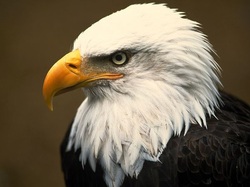
The Bald Eagle has been the national emblem of the United States since 1782 and a spiritual symbol for native people for far longer than that. These regal birds aren’t really bald, but their white-feathered heads gleam in contrast to their chocolate-brown body and wings. Look for them soaring in solitude, chasing other birds for their food, or gathering by the hundreds in winter. Once endangered by hunting and pesticides, Bald Eagles have flourished under protection.
Bald Eagles build some of the largest of all bird nests—typically 5 to 6 feet in diameter and 2 to 4 feet tall, and ranging in shape from cylindrical to conical to flat, depending on the supporting tree. Both sexes bring materials to the nest, but the female does most of the placement. They weave together sticks and fill in the cracks with softer material such as grass, moss, or cornstalks. The inside of the nest is lined first with lichen or other fine woody material, then with downy feathers and sometimes sprigs of greenery. Ground nests are built of whatever is available, such as kelp and driftwood near coastal shorelines. Nests can take up to three months to build, and may be reused (and added to) year after year.
The Bald Eagle’s recovery is a spectacular conservation success story. Once abundant in North America, the species became rare in the mid-to-late 1900s—the victim of trapping, shooting, and poisoning as well as pesticide-caused reproductive failures. In 1978 the bird was listed for protection under the Endangered Species Act. Since 1980, gentler treatment by humans along with the banning of DDT (the bird’s main pesticide threat) have led to a dramatic resurgence. By the late 1990s, breeding populations of Bald Eagles could be found throughout most of North America. In June 2007, the bird’s recovery prompted its removal from the Endangered Species list. Continuing threats to Bald Eagle populations include lead poisoning from ammunition in hunter-shot prey, collisions with motor vehicles and stationary structures, and development-related destruction of shoreline nesting, perching, roosting and foraging habitats. They are still vulnerable to environmental pollution, as evidenced by the 1989 Exxon Valdez oil spill in Prince William Sound, Alaska. An estimated 247 Bald Eagles died from oil exposure. Population levels in the Sound decreased by almost four percent the following year. The local population returned to pre-spill levels by 1995. Today there are about 250,000 Bald Eagles, according to estimates by Partners in Flight, with 88 percent spending part of the year in the U.S., 31 percent in Canada, and 8 percent in Mexico. They are not on the 2012 Watch List.
Winter and early spring are dominated by some twenty five American Bald Eagles that migrate to the Texas Colorado River Canyon for the winter.
Something extraordinary is at your fingertips. The spectacular beauty of this once endangered species is migrating to our back yards here in the Texas Hill Country.
Bald Eagles build some of the largest of all bird nests—typically 5 to 6 feet in diameter and 2 to 4 feet tall, and ranging in shape from cylindrical to conical to flat, depending on the supporting tree. Both sexes bring materials to the nest, but the female does most of the placement. They weave together sticks and fill in the cracks with softer material such as grass, moss, or cornstalks. The inside of the nest is lined first with lichen or other fine woody material, then with downy feathers and sometimes sprigs of greenery. Ground nests are built of whatever is available, such as kelp and driftwood near coastal shorelines. Nests can take up to three months to build, and may be reused (and added to) year after year.
The Bald Eagle’s recovery is a spectacular conservation success story. Once abundant in North America, the species became rare in the mid-to-late 1900s—the victim of trapping, shooting, and poisoning as well as pesticide-caused reproductive failures. In 1978 the bird was listed for protection under the Endangered Species Act. Since 1980, gentler treatment by humans along with the banning of DDT (the bird’s main pesticide threat) have led to a dramatic resurgence. By the late 1990s, breeding populations of Bald Eagles could be found throughout most of North America. In June 2007, the bird’s recovery prompted its removal from the Endangered Species list. Continuing threats to Bald Eagle populations include lead poisoning from ammunition in hunter-shot prey, collisions with motor vehicles and stationary structures, and development-related destruction of shoreline nesting, perching, roosting and foraging habitats. They are still vulnerable to environmental pollution, as evidenced by the 1989 Exxon Valdez oil spill in Prince William Sound, Alaska. An estimated 247 Bald Eagles died from oil exposure. Population levels in the Sound decreased by almost four percent the following year. The local population returned to pre-spill levels by 1995. Today there are about 250,000 Bald Eagles, according to estimates by Partners in Flight, with 88 percent spending part of the year in the U.S., 31 percent in Canada, and 8 percent in Mexico. They are not on the 2012 Watch List.
Winter and early spring are dominated by some twenty five American Bald Eagles that migrate to the Texas Colorado River Canyon for the winter.
Something extraordinary is at your fingertips. The spectacular beauty of this once endangered species is migrating to our back yards here in the Texas Hill Country.
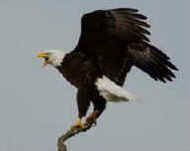
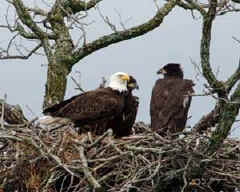
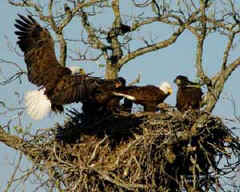
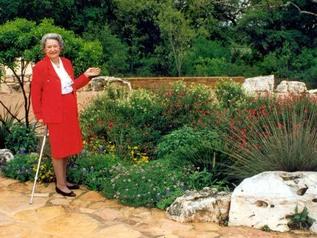
 RSS Feed
RSS Feed